Bull Trout Example
Climatic and Habitat Variation is Related to Genetic Diversity in Bull Trout
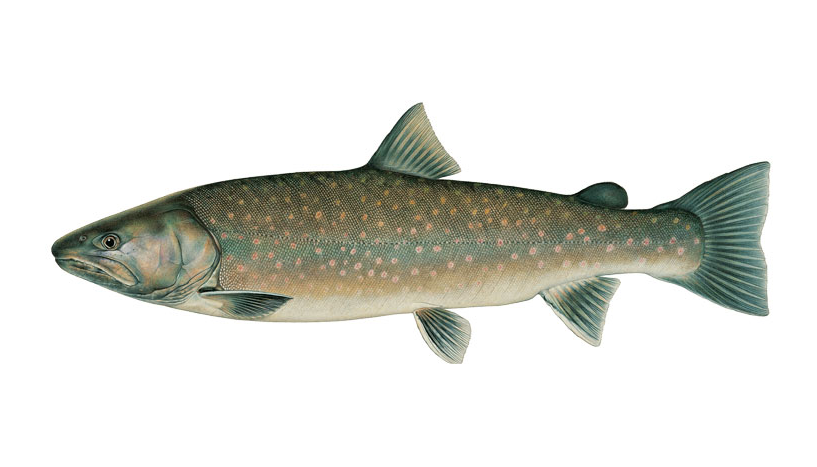
Understanding how climatic variation influences ecological and evolutionary processes is critical for informed conservation decision-making. Nevertheless, few studies have measured how climatic variation influences genetic diversity within populations or how genetic diversity is distributed across space relative to current or future climatic stress. Here, we tested whether patterns of genetic diversity (allelic richness) were related to climatic variation and habitat features in 130 bull trout (Salvelinus confluentus) populations across the Columbia River Basin, USA.
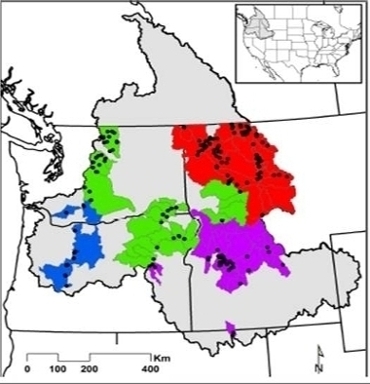
(Above) Map of sampled populations (black dots) throughout the Columbia River drainage. In panel (a) the four bull trout conservation recovery units are highlighted in different colors: Coastal (blue), mid-Columbia River (green), Snake River (purple), and upper-Columbia (red). The inset map depicts the Columbia River Basin (shaded grey) relative to the United States.
(Below) After accounting for this spatial pattern, allelic richness in bull trout populations was positively related to habitat patch size and complexity, and negatively related to maximum summer temperature and the frequency of winter flooding. Relationships between bull trout allelic richness and total stream length (a), proportion valley bottom habitat (b), frequency of winter flooding (c), and maximum summer temperature (d) in critical spawning and rearing habitats. Values for predictor values are standardized. The dark black line is the overall mean population fitted line, while the colored lines and circles represent the four recovery units: Coastal (blue), mid-Columbia River (green), upper Snake River (grey), and upper-Columbia (red).
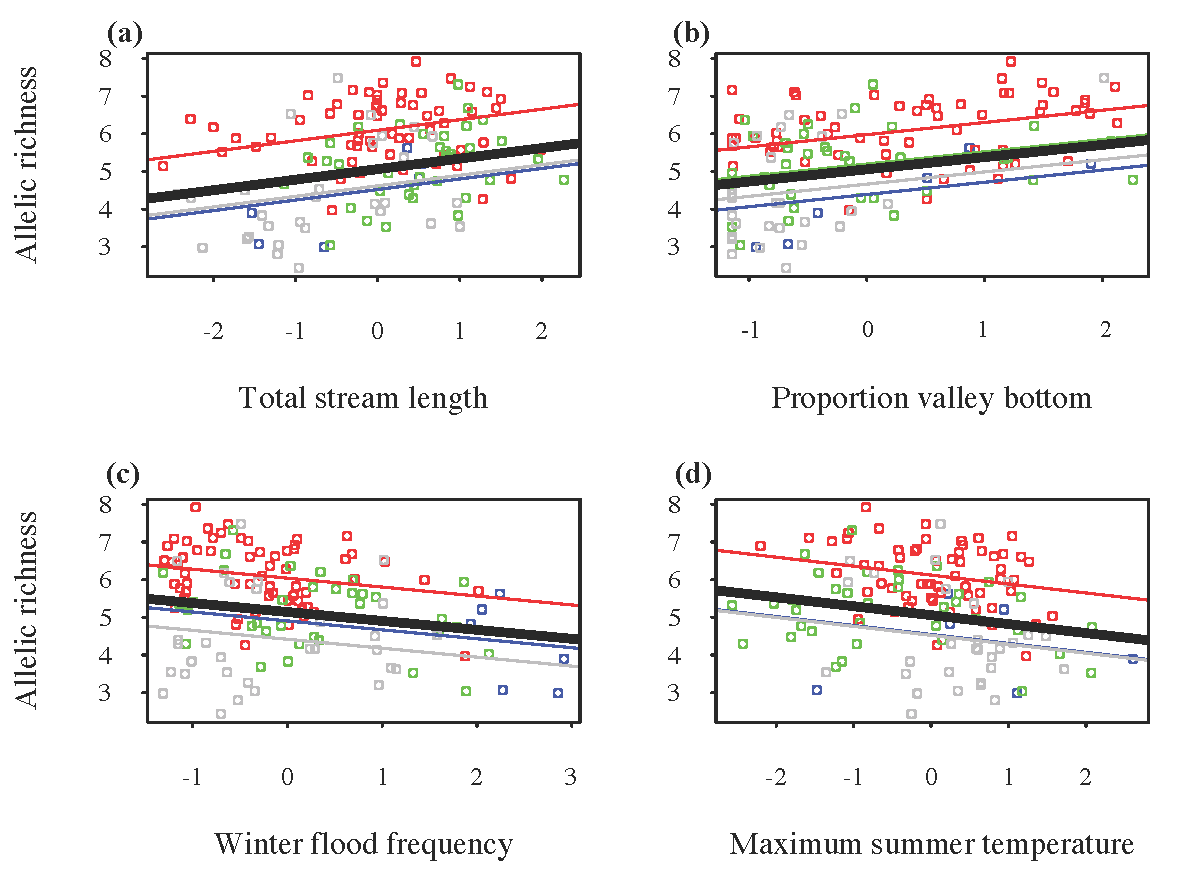
Climatic stress and future vulnerability at a watershed scale was negatively correlated with average genetic diversity (r = -0.45 – -0.61; P < 0.026); watersheds containing populations with lower average genetic diversity had the lowest habitat complexity, warmest water temperatures, and greatest frequency of winter flooding currently and in to the future.
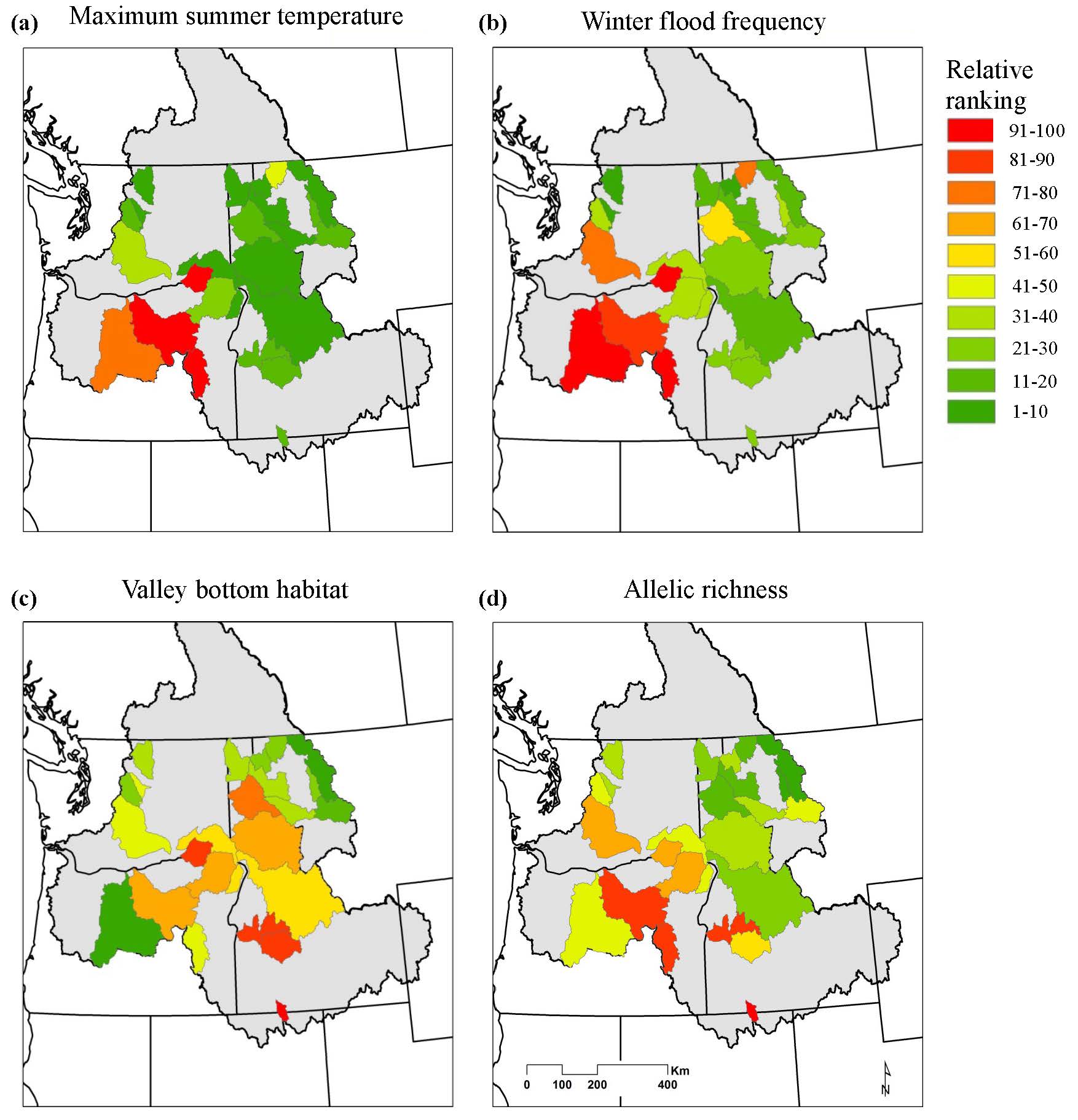
(Above) Relative rankings of winter flood frequency (a), maximum summer temperature (b), proportion valley bottom habitat (c) and average allelic richness (d) for watersheds inhabited by bull trout across the Columbia River drainage. Values are scaled from 1-100 with large values (green) representing the best conditions for bull trout (i.e. lowest frequency of winter flooding, coolest temperatures, greatest proportion of valley bottom habitat, and highest allelic richness). Only those watersheds with at least two sampled populations are displayed.
We then determined whether bull trout genetic diversity across watersheds was related to their estimated climate vulnerability, which we quantified on the basis of exposure to climatic conditions and habitat complexity. We found a strong gradient in genetic diversity in bull trout populations across the Columbia River Basin, where populations located in the most upstream headwater areas had the greatest genetic diversity. Our results strongly suggested that projected increases in stream temperatures and winter flooding are likely to adversely impact ecological and evolutionary processes for this threatened species.
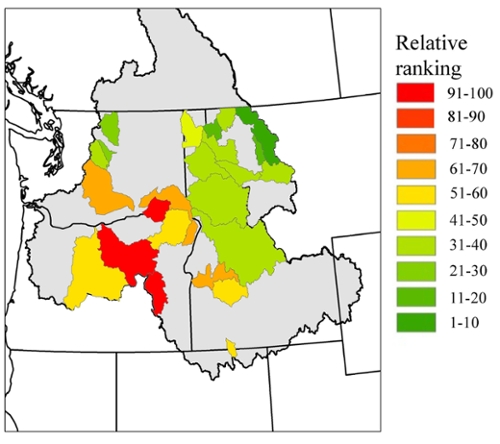
How can this study and information help managers and decision makers?
Ultimately, this study demonstrated the value of using genetic data to quantify the effects of climatic variation on biodiversity at multiple spatial scales, and emphasizes that for some species evolutionary potential might already be depressed in those populations where adaptation might also be most needed for future persistence.
Text and figures adapted from the following source:
Kovach RP, Muhlfeld CC, Wade AA, Hand BK, Whited DC, DeHaan P, Luikart G. Climatic and habitat variation is related to genetic diversity in bull trout: implications for vulnerability to climate change. Global Change Biology 21, no. 7:251--2524. doi:10.1111/gcb.12850.
